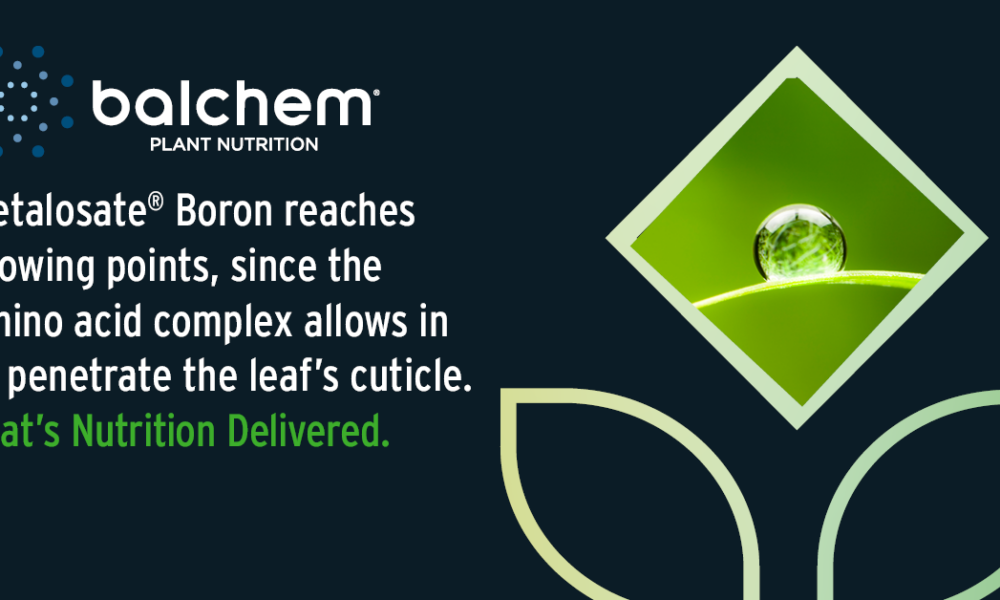
Boron, one of the 16 essential elements of plant nutrition, plays a critical role in cell wall synthesis. In plants with deficiency cell walls are dramatically altered. This leads to cracked stems, stem “corkiness,” or “hollow stem disorder.” These are all commonly attributed to low boron levels. Boron maintains a cell’s structural integrity by forming weak cross links. These critical links improve the plant’s ability to elongate cells and make them flexible without destroying them. Since the cross-links are weak, they can break and then reform during the cell wall elongation process. This is very evident in pollen tube growth.

Some of the most rapid responses to boron deficiencies are seen in root growth and development. When researchers removed the source of boron within just hours root growth inhibition occurred and the roots took on a stubby or bushy appearance. This has led experts to believe that boron primarily influences the cell wall and then cascades into secondary effects in metabolism, growth and plant composition.1
Clearly Boron balance is vital to the success of plant growth, germination and propagation. Boro Metalosate® delivers boron to the plant with a superior mode of action. This provides plants with proper boron balance in areas it needs it most. For more information about how to maximize productivity by applying Metalosate Boron contact a Balchem Plant Nutrition Representative now and learn more about boron here.
Marschner, H. Mineral Nutrition of Higher Plants (2nd ed.) (p. 390). San Diego, CA: Academic Press.


